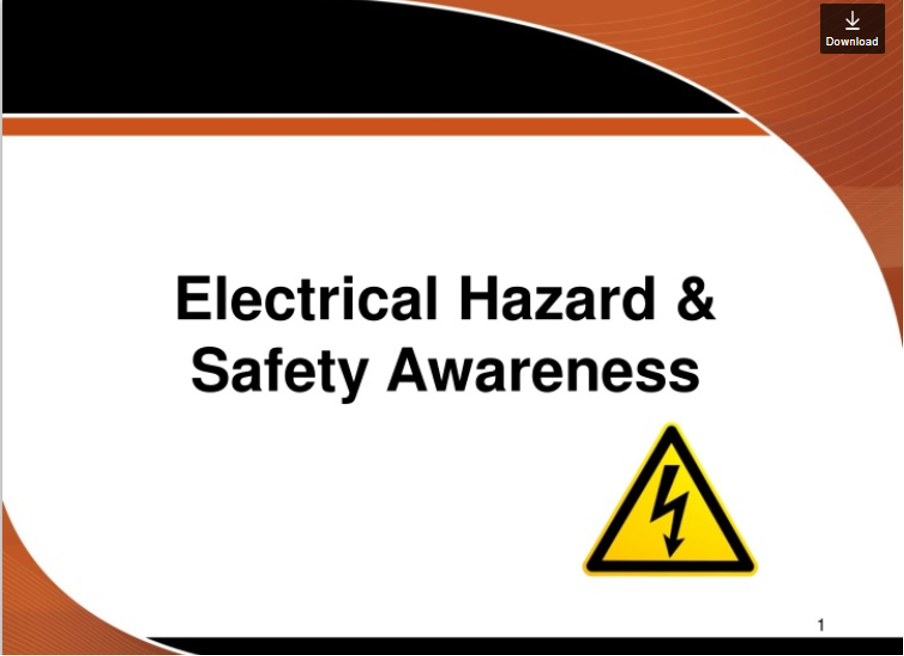When it comes to electrical safety, it’s essential to understand the diverse range of hazards that can pose a risk in residential and commercial settings. These hazards include electric shocks, electrocution, fires, and explosions, stemming from issues like faulty wiring, damaged electrical supplies, or improper device usage. By familiarizing ourselves with these hazards and implementing preventive measures, we can ensure the safety of individuals working with or around electricity. In this article, we will explore common electrical hazards, provide guidance on identification, and offer effective solutions to address them, prioritizing safety in electrical environments.
Types of Electrical Hazards
1. Electrical Shock
Electrical shock is no joke. It’s a seriously dangerous hazard that can mess you up or even take your life. When an electric current flows through your body, it messes with your normal electrical signals and can wreck your tissues. You can get zapped by touching a live wire or a busted appliance directly, or indirectly through something conductive like water.
The effects of electrical shock can be all over the place, from a little tingle to nasty burns, muscle spasms, and even your heart-stopping. Certain factors amp up the risk, like being exposed to high voltage, working in wet conditions, or hanging out near conductive stuff. So, don’t play around with electrical hazards. Make sure you’re using equipment that’s got proper insulation and steer clear of live wires and other electrical sources.
2. Electrical Burns
Electrical burns are a serious consequence of coming into contact with an electrical source. The severity of the burn depends on factors such as the amount and duration of current flow, as well as the path it takes through the body.
These burns can result in various injuries, including damage to the skin, muscles, nerves, bones, and internal organs. In extreme cases, they can even be deadly. Symptoms of an electrical burn range from pain and burning sensations to numbness, tingling, muscle spasms, and loss of consciousness. Breathing difficulties and cardiac arrest may also occur.
If you or someone you know has experienced an electrical injury, immediate medical attention is crucial. To prevent electrical burns, it is important to avoid touching wires or equipment with wet hands, exercise caution when working around electrical devices, ensure proper grounding of outlets and appliances, use electrical equipment safely, and rely on qualified electricians for any electrical work.
3. Electrical Fire
When it comes to electrical hazards, one of the most critical risks to address is electrical fires. These fires can originate from various sources, such as faulty wiring, overloaded circuits, damaged appliances, or improper installations. Beyond property damage and potential injuries, electrical fires can rapidly spread, making them exceptionally hazardous.
To prevent electrical fires, it’s crucial to have qualified professionals install and maintain electrical systems and appliances, avoid overloading circuits, and refrain from using damaged or outdated equipment. Additionally, having working smoke detectors and fire extinguishers in place at home or in the workplace can help detect and control fires at an early stage. By taking proactive measures to prevent electrical fires, you can ensure a safe and secure environment for yourself and those around you.
4. Electrical Explosion
Electrical explosions pose a significant risk as they involve the sudden release of energy within an electrical system, resulting in a violent burst. These explosions can be triggered by various factors, including electrical faults, overloading, or the presence of flammable substances near electrical equipment. To minimize the risk of electrical explosions, it is vital to follow proper electrical installation guidelines, conduct regular inspections and maintenance of electrical systems, and implement safety measures such as circuit protection devices and explosion-proof enclosures.
5. Electrical Arc Flash
An arc flash refers to a rapid and hazardous energy discharge that arises when an electric current jumps between two points, resulting in a sudden release of intense heat and light. This phenomenon occurs due to insulation breakdown or when conductive materials come into close proximity. The extreme heat and pressure produced by an arc flash can cause severe injuries, including burns and blindness, and also lead to equipment and structural damage. Therefore, it is crucial to take necessary precautions, such as wearing appropriate personal protective equipment and adhering to established safety protocols, to minimize the risks associated with electrical arc flashes. By prioritizing safety measures, individuals can effectively mitigate the potential hazards posed by arc flashes.
Final Thoughts
Electrical hazards can be dangerous and even deadly if not handled properly. It’s important to be aware of the different types of electrical hazards and take the necessary precautions to protect yourself and others. Remember that there are certain electrical tasks you should never DIY, as they require the expertise of a trained professional. Don’t put yourself at risk by attempting to handle these tasks on your own. Instead, contact a licensed electrician who can safely and efficiently take care of any electrical needs you may have. Stay safe and stay informed!
Author Bio
Jeson Pitt works with the marketing department of D&F Liquidators and regularly writes to share his knowledge while enlightening people about electrical products and solving their electrical dilemmas. He’s got the industry insights that you can count on along with years of experience in the field.


Comments are closed.